Fashioning Felt at the Cooper Hewitt
For me, the concept of "re-discovering" traditional materials-"new-old" materials, as the current catch-phrase has it-evokes alternatives to stick-frame houses. I'm speaking of the recent accomplishments (or re-discovery of old-school accomplishments) in earth-friendly building techniques like Straw Bale, Cob, and Cordwood. But a new “new old” material that's more intertwined with design seems to have emerged on the scene.
Cell LED carpet. Designed by LAMA Concept.
Felt-most familiar to me (and others of my generation, I suspect) through myriad incarnations of poorly executed grade school arts and crafts projects-has been popping up in the most interesting places. Just last month, we saw an innovative use for the material in Molo's Love Letter Lights, and last week I took a look at Jeremy Kaplan's upholstered Felt Chaise. As it turns out, we aren't the only ones who've noticed this woolly ascendance: just last Friday, the Cooper Hewitt Design Museum opened Fashioning Felt, a six-month-long exhibit featuring "historic examples of felts, innovations in handmade felts, and contemporary uses of industrial felt in a range of fields, including product design, fashion, architecture, and home furnishings."
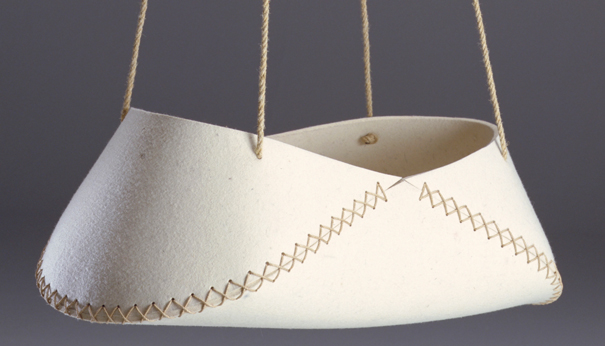
Swing Low cradle. Designed by Søren Ulrick Petersen, produced by SUP Design.

Bless You chair. Designed by Louise Campbell.
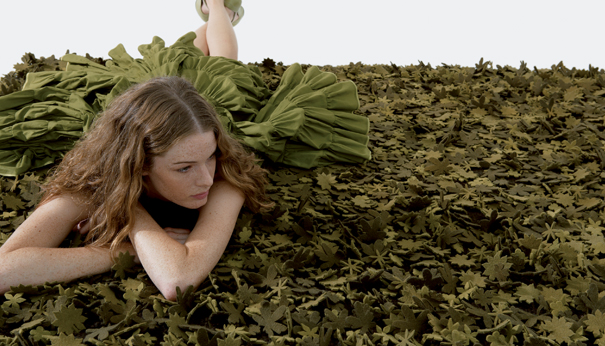
Little Field of Flowers carpet. Designed by Studio Tørd Boontje. Manufactured by Nanimarquina.
Felt is a tremendously versatile material. Created by applying simple friction (whether of the human-powered variety or with mechanical assistance), felt has no internal structure and thus eschews time and power intensive manufacturing techniques like knitting, weaving, or spinning. The upshot is that the material is inherently green-readily available, low impact, and practically waste-free. Fashioning Felt opens with a look at the historic use of the material among the nomadic, sheep-herding cultures of Central Asia: "known since at least the Neolithic period (9000 B.C.), felt is believed to be the first man-made cloth. It was the single most significant material for the nomadic tribes of Central Asia and was used to make everything from clothing to the flexible, collapsible dwellings known as yurts" (via Seventh Space).
In fact, the exhibition space is a tribute to this, civilization's first modular and portable home. The domed ceiling and glass walls of Cooper Hewitt's conservatory reminded Hand-Felter Janice Arnold of a traditional yurt, so she adorned the space with fabrics of her own creation, mimicking the varying thicknesses and splendid colors of the fabrics used in a traditional yurt, a scheme that diffuses light and thus creates an aesthetically captivating interior.
Within said space, attendees will find felt in its multiple forms. From Søren Ulrick Petersen‘s cradle, to structural felt furniture by Louise Campbell, to architectural uses as seen in Tord Boontje's "Little Field of Flowers" carpet, and LAMA Concept's "Cell LED" carpet, aficionados and impresarios alike will encounter a myriad of sustainable incarnations of fascinating, functional felt.
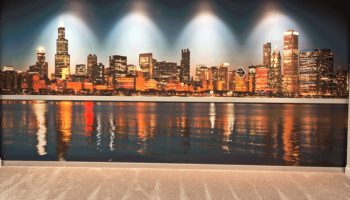
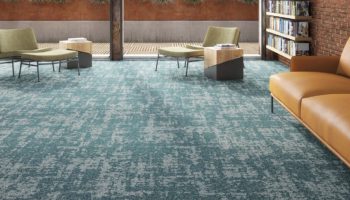
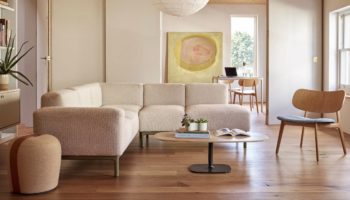
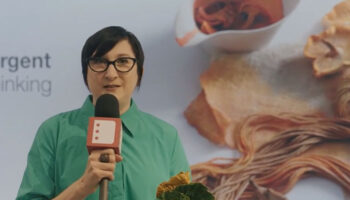
Leave a Reply